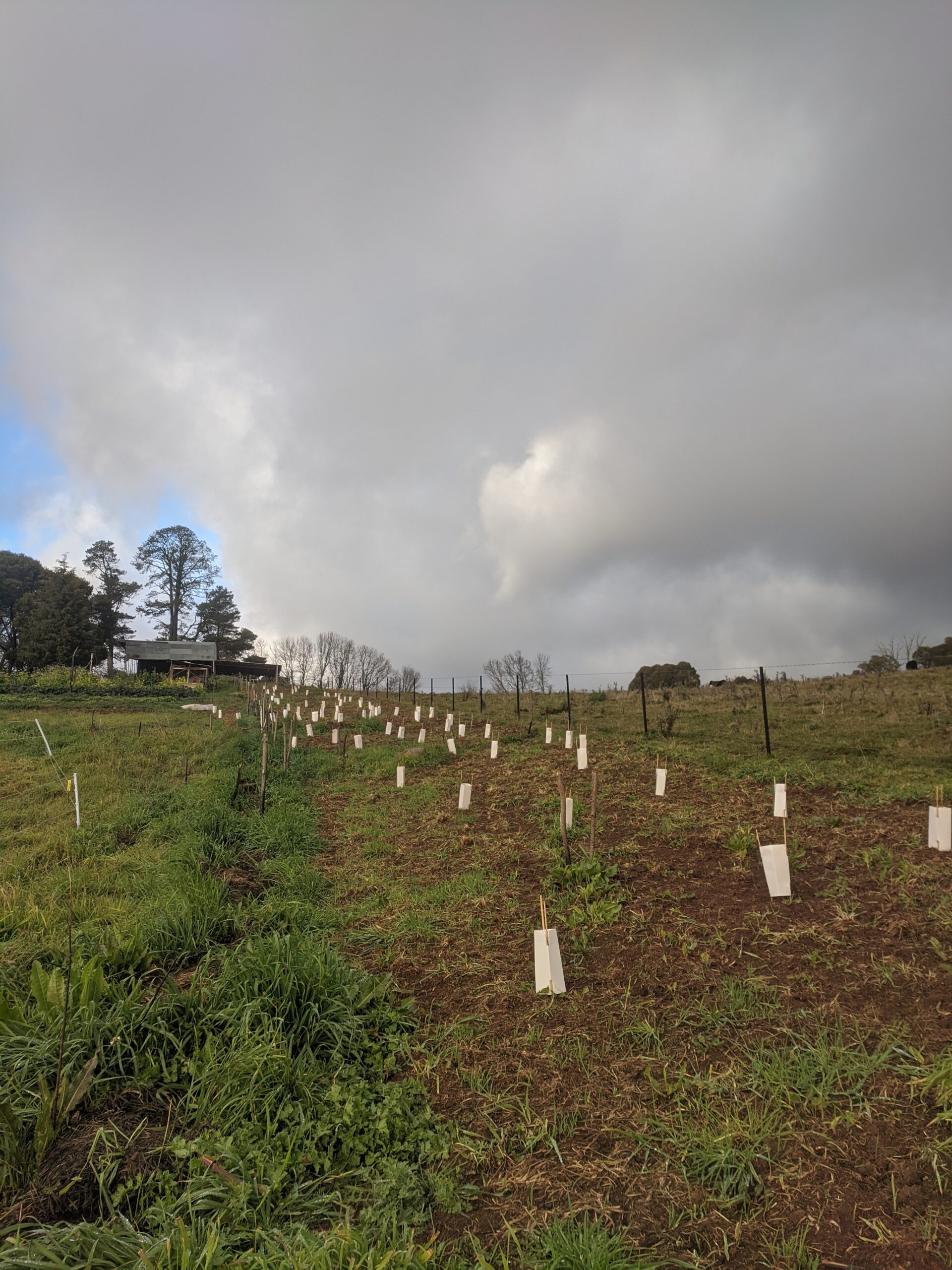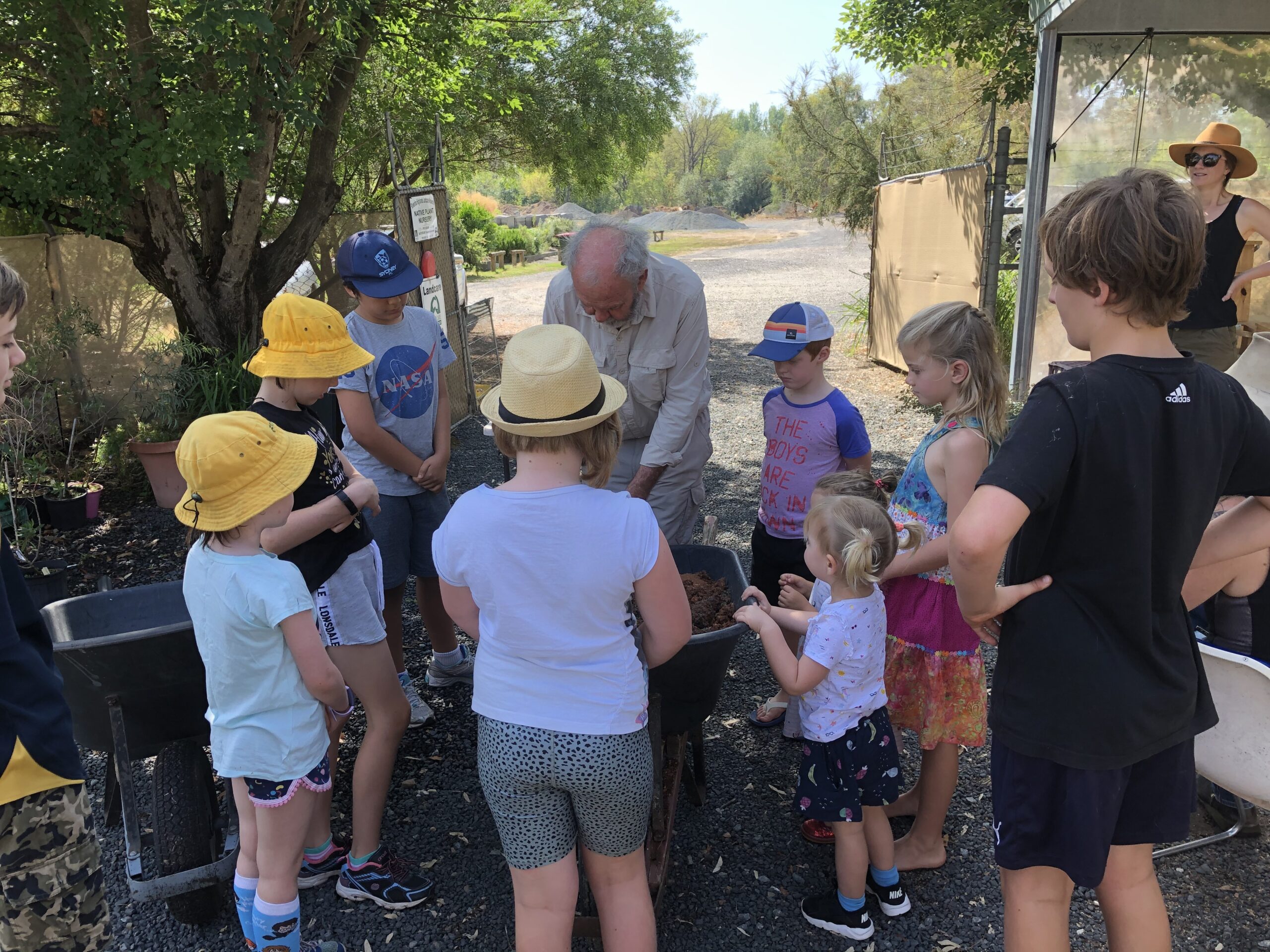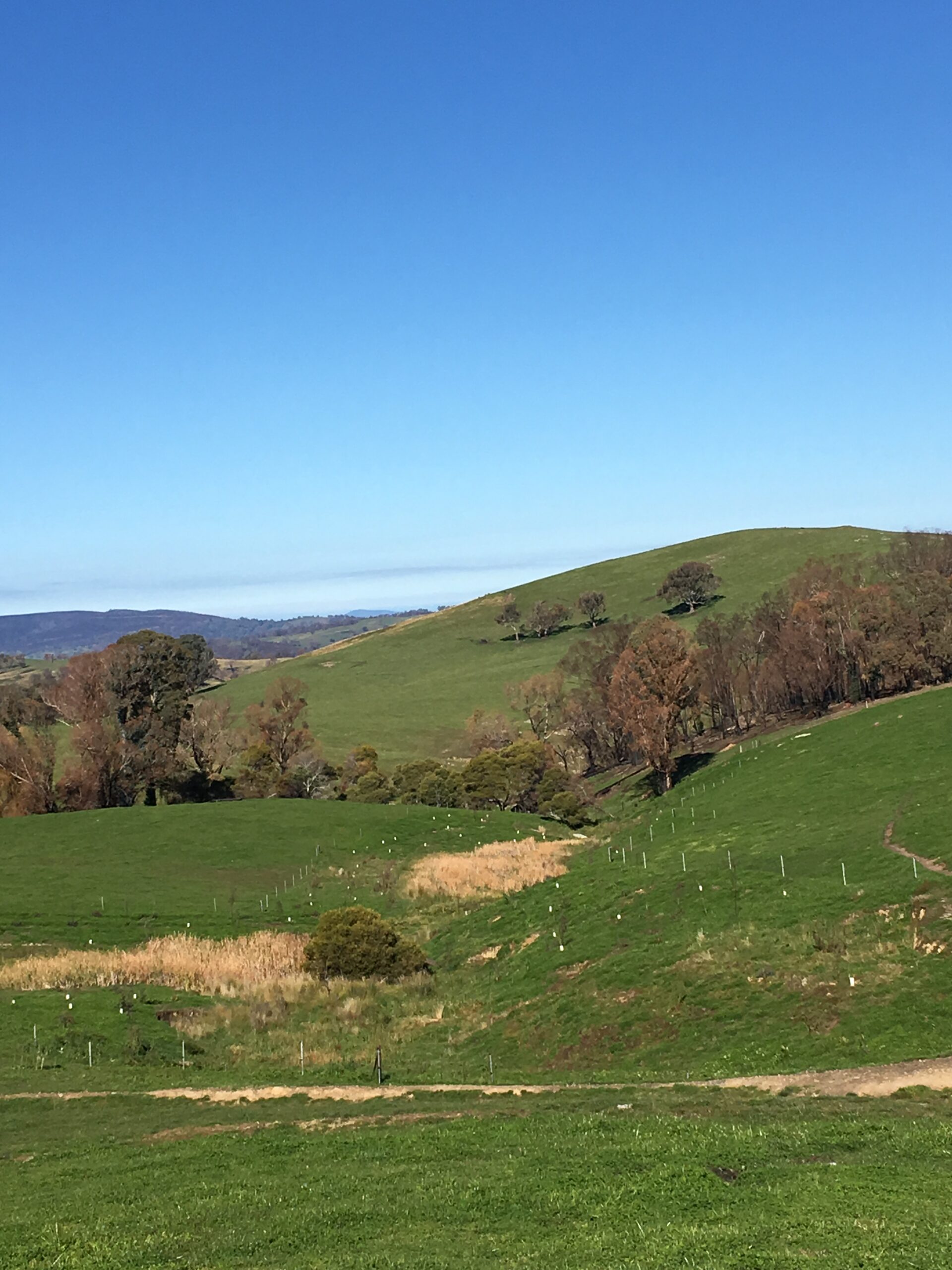Establishing plantings within bushfire impacted areas
Case Study
2019 Jaramas Foundation Landcare Grant
| Grant Recipient: | Riverina Highlands Landcare Network |
| State/Town: | Tumut, New South Wales |
Project Overview
Like many parts of the New South Wales Riverina Highlands, clearing, grazing and stock camping in the Tumut area has led to land degradation issues including weeds, soil erosion and nutrient run-off.
To address these issues, the Riverina Highlands Landcare Network (RHLN) wanted to establish a series of corridors of native vegetation on properties that could adapt to future climate variability by utilising plant species that show resilience to these anticipated changes.
In 2019, they were successful in obtaining $14,950 in funding from a Jaramas Landcare Grant for this project.
Changing project focus during times of drought, fires and Covid-19
However, multiple factors made it unfeasible to implement the project as planned. In 2019, the area was significantly drought affected and then in late 2019, the Dunns Road bushfire burned out much of the region. The ability to continue the project was further hampered by Covid-19 and the restrictions associated with the health order.
Because of these significant issues, the RHLN reconsidered some of the proposed plantings so as not to overburden landholders impacted by drought, fire and Covid-19. To support the landholders in their recovery from the bushfires, the focus of the project shifted from creating climate ready corridors to establishing plantings within areas impacted by the bushfires.As a result, they were able to fast track the remaining activities ensuring the project was completed on time and in line with the agreed budget.
To achieve maximum results, the Group worked with 15 landholders, predominately graziers, in the Tumut area.
Environmental Outcomes
The project resulted in multiple environmental outcomes including:
- Restoring 4.5ha of Grassy White Box Woodlands (an endangered EEC) by planting 3,325 tubestock plantings and 65 paddock trees.
- Providing habitat for various woodland birds, including Superb Parrot, Brown Tree Creeper and the Diamond Firetail.
- Increasing connectivity for native fauna such as woodland bird species and small marsupials such as gliders and possums.
Environmental Outcomes
A key component of the project was conducting two native seed bomb workshops at the Riverina Highlands Landcare Nursery to provide the community and landholders with the knowledge and skills about implementing a new, cost-effective land revegetation technique adapted to climatic variability.
Dick Green, renowned botanist and conservationist delivered the seed bomb workshops. At the workshop specifically for young Landcarers, 18 children learned how to create a range of seedballs ranging from vegetable, to native flowers and native shrubs. They were able to take them home with them to spread through their own gardens and/or bushland.
A second workshop was held for local Landcarers, landholders and others interested in bush regeneration. The 27 people who participated were provided with the necessary items to create seed bombs for restoring landscapes across the local region, especially in areas impacted by the recent fires.
At the same time, the Riverina Highlands Landcare Network’s Nursery Coordinator volunteers were trained to create and use seed bombs as a form of landscape restoration
The workshops were enjoyable and proved valuable to the participants. These events and the project in general, helped to increase the community’s capacity to protect local remnant vegetation.
Conclusion
The original intent of the project was to construct native tree corridors to provide future shade and shelter for livestock and habitat for native species. However, due to the impact of drought, bushfire damage and Covid-19 on this area, the project focus had to shift with the funds predominantly being spent on replanting Landcare Australia funded sites as well as paddock trees to replace plantings and paddock lost in the drought and bushfire
Claire White, from the Riverina Highlands Landcare Network said, “The 15 landholders who participated in this project were extremely grateful to receive assistance to help them restore their sites.”






